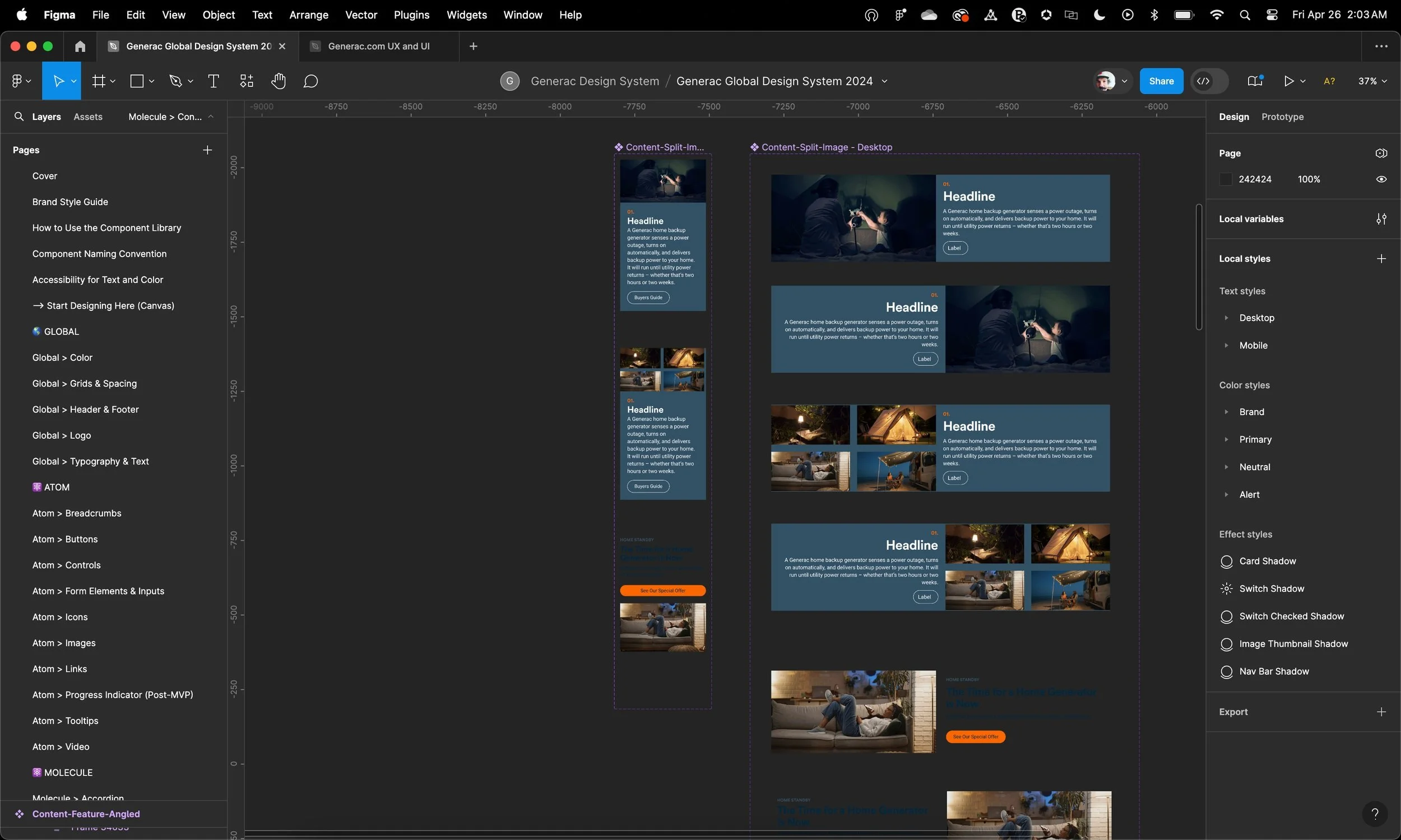
How I build a design system
Clients: Generac, Allianz Life, Yelloh!, Range Truck Group
Role: Lead UX Designer & Design System Architect
Responsibilities: UX design, visual design, brand design, UX writing, instructional design, information architecture
Overview
I spearheaded the creation and implementation of a comprehensive design system for several of our clients. Because of this, our team was able to streamline our design processes, ensure consistency across both product and business units, and elevate the user experience to new heights.
As both the Lead UX Designer and Design System Architect, I played a pivotal role in defining each system's components, guidelines, and governance framework, as well as guiding its adoption across various product teams.
You can read more about my approach to building design systems in this article I wrote for Bold Orange in October of 2023.
Considerations
Strategic Planning: I collaborated closely with stakeholders, client services, developers, and project management to establish a strategic roadmap for the design system, aligning it with organizational objectives and long-term goals. By articulating the value proposition and benefits of a design system, I garnered support and buy-in from key decision-makers.
Cross-functional Collaboration: Recognizing the interdisciplinary nature of design systems, I facilitated collaboration between design, development, and product management teams to ensure that diverse perspectives were considered in the system's creation and implementation. Through regular workshops, design reviews, and cross-team communication channels, I fostered a culture of collaboration and shared ownership.
In particular, I try to spend extra time with the Front-End Dev(s) in analyzing existing patterns and components, if they have them (and they don’t always). Since the design system is just a bunch of visual ideas if the FED isn’t able to implement it in a pattern library, their buy-in and partnership is critical.
Empowerment and Enablement: As a believer in the power of empowerment, I empowered team members to contribute to the design system by providing them with the necessary resources, tools, and training. Whether through hands-on workshops, documentation, or one-on-one coaching sessions, I ensured that team members felt confident and capable of utilizing the design system to its full potential.
Design System Highlights
Comprehensive Component Library: For each client I led the development of a comprehensive library of reusable components, patterns, and design tokens, meticulously documenting their usage guidelines and best practices to facilitate adoption and ensure consistency across products and business units.
Scalable Architecture: Leveraging my expertise in information architecture and system design, I organized a scalable and modular design system architecture that could accommodate future growth and evolution. By designing for flexibility and extensibility, and by choosing to structure that organization around the nearly-universal language of atomic design, I future-proofed the system against rotating product team members, technological advancements and changing business needs.
Impact
Through the successful implementation of the design system, we achieved significant improvements in design efficiency, consistency, and collaboration across product teams. By reducing duplication of efforts and streamlining workflows, we were able to accelerate product development cycles and deliver higher-quality experiences to our users.
On Schwan’s/Yelloh!, switching their marketing team to Figma and having my design system in place helped our development process become over 45% more efficient, and saved us a day out of our standard product development life cycle. For the company’s bi-monthly homepage updates, development time went from four hours down to 20 minutes.


